-
Review Article
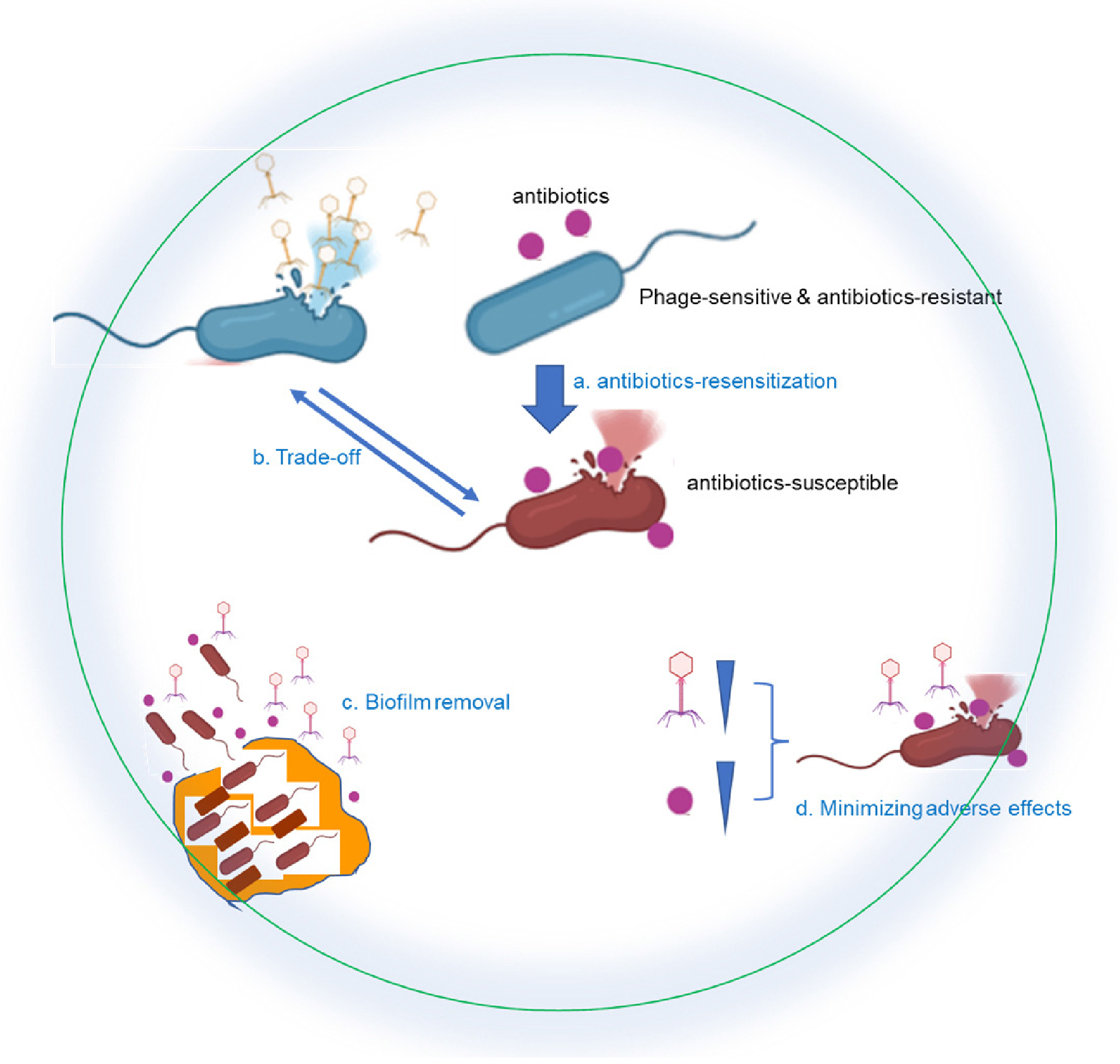
- Phage-Antibiotic Synergy Review: Mechanisms, Applications, and Future Prospects
- Jae-Won Lee, Jungmin Kim, Shukho Kim
- Phage-antibiotic synergy (PAS) is emerging as a promising strategy to combat antibiotic-resistant bacterial infections. This review explores the mechanisms, applications, and future …
- Phage-antibiotic synergy (PAS) is emerging as a promising strategy to combat antibiotic-resistant bacterial infections. This review explores the mechanisms, applications, and future prospects of PAS by analyzing relevant studies focused on its effectiveness against 13 bacterial species, including Pseudomonas aeruginosa, Staphylococcus aureus, Acinetobacter baumannii, and Escherichia coli. PAS enhances bacterial clearance through mechanisms such as antibiotic resensitization, biofilm disruption, and reducing bacterial virulence. It also minimizes adverse effects by allowing lower antibiotic doses. Despite these advantages, challenges persist, including the need to identify optimal phage-antibiotic combinations and understand their molecular interactions. Antagonistic effects were observed in specific combinations, highlighting the necessity for careful evaluation before clinical application. The review emphasizes the potential of PAS in revolutionizing treatment strategies against multidrug-resistant pathogens and suggests the development of predictive models using bioinformatics for better therapeutic outcomes. Continued research is essential to bridge the gap between laboratory findings and clinical applications, paving the way for effective PAS-based therapies. - COLLAPSE
-
Review Article
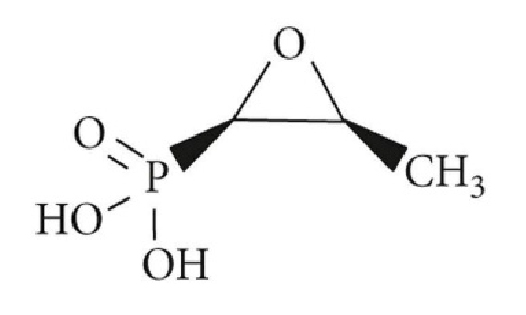
- Fosfomycin, an Antibacterial Agent for Urinary Tract Infections
- Jannatul Mawa Mim, Shohana Ferdoush, Fatema Hossain Lia, Md. Towfiquzzaman, Md. Robin Mia, Mohammad Saydur Rahman, Young-Sang Koh
- Canadian, American, and European guidelines and authorities recommend fosfomycin for managing acute uncomplicated cystitis. Fosfomycin is the main treatment option for multidrug-resistant …
- Canadian, American, and European guidelines and authorities recommend fosfomycin for managing acute uncomplicated cystitis. Fosfomycin is the main treatment option for multidrug-resistant (MDR) Gram-negative bacterial infections. Fosfomycin (C3H7O4P) is a member of the epoxide family and a derivative of phosphonic acid, with a molecular weight of 138 Da. Fosfomycin is an antibacterial drug that acts against both Gram-positive and -negative bacteria and is structurally unrelated to any other antibiotic class currently in use. Fosfomycin was developed in the late 1960s; however, fosfomycin use has experienced a resurgence owing to its ability to effectively combat various extensively drug-resistant (XDR) and MDR diseases, which is due to its distinct mode of action and wide range of activity. Enterobacteriaceae-related disease requires treatment with combination therapy owing to Enterobacteriaceae acquiring various antibiotic resistance genes through plasmids and mobile elements. Additionally, the emergence of fosfomycin-resistance genes in isolates originating from humans, animals, food, and the environment has raised concerns about the potential for the spread of these bacteria, particularly Salmonella and Escherichia coli, at the interfaces among humans, animals, and the environment. Many in vitro studies have focused on combining fosfomycin and carbapenems; however, additional pharmacokinetic, pharmacodynamic, and clinical studies are required to maximize the use of fosfomycin. - COLLAPSE
-
Original Article

- Amplicon-based MinION Sequencing, Genomic Characterization, and Zoonotic Potential of Patient-derived Chikungunya Virus Imported from Thailand, Republic of Korea
- Seonghyeon Lee, Seung Soon Lee, Bohyeon Kim, Haryo Seno Pangestu, Augustine Natasha, Jae Hwan Byun, Jieun Park, Sara Puspareni Prayitno, Woan Lee, Yeonsu Oh, Kyu Sung Shin, Won-Keun Kim
- Chikungunya virus (CHIKV), causing Chikungunya fever (CF), is transmitted by Aedes mosquitoes primarily in tropical regions. CHIKV infection poses a public health …
- Chikungunya virus (CHIKV), causing Chikungunya fever (CF), is transmitted by Aedes mosquitoes primarily in tropical regions. CHIKV infection poses a public health burden owing to international travel and climate change. Implementation of Next-generation sequencing (NGS) for whole-genome sequencing (WGS) contributes to the formulation of effective public health and travel medicine policies to mitigate emerging CHIKV in non-endemic areas. A patient with CF, who traveled to Thailand, was enrolled at Sacred Chuncheon Hospital (Chuncheon, Republic of Korea). Amplicon-based NGS was performed using the patient’s sera on days 2 and 6 after hospitalization. The nearly whole genome sequence of CHIKV was recovered from day 2 post-hospitalization, while only 9% on day 6. The phylogenetic inference demonstrated that the CHIKV genotype belonged to the East/Central/South African lineage. In addition, zoonotic potential was evaluated by the machine learning model. This study highlights the effectiveness of amplicon-based MinION sequencing derived from a patient who traveled from an endemic area. Collection of patient samples early in infection is strongly correlated with genomic acquisition and genotypic identification. Therefore, this study provides insight into the active surveillance for NGS-based genomic diagnosis and characterization of emerging CHIKV outbreak in endemic and non-endemic areas. - COLLAPSE
-
Original Article
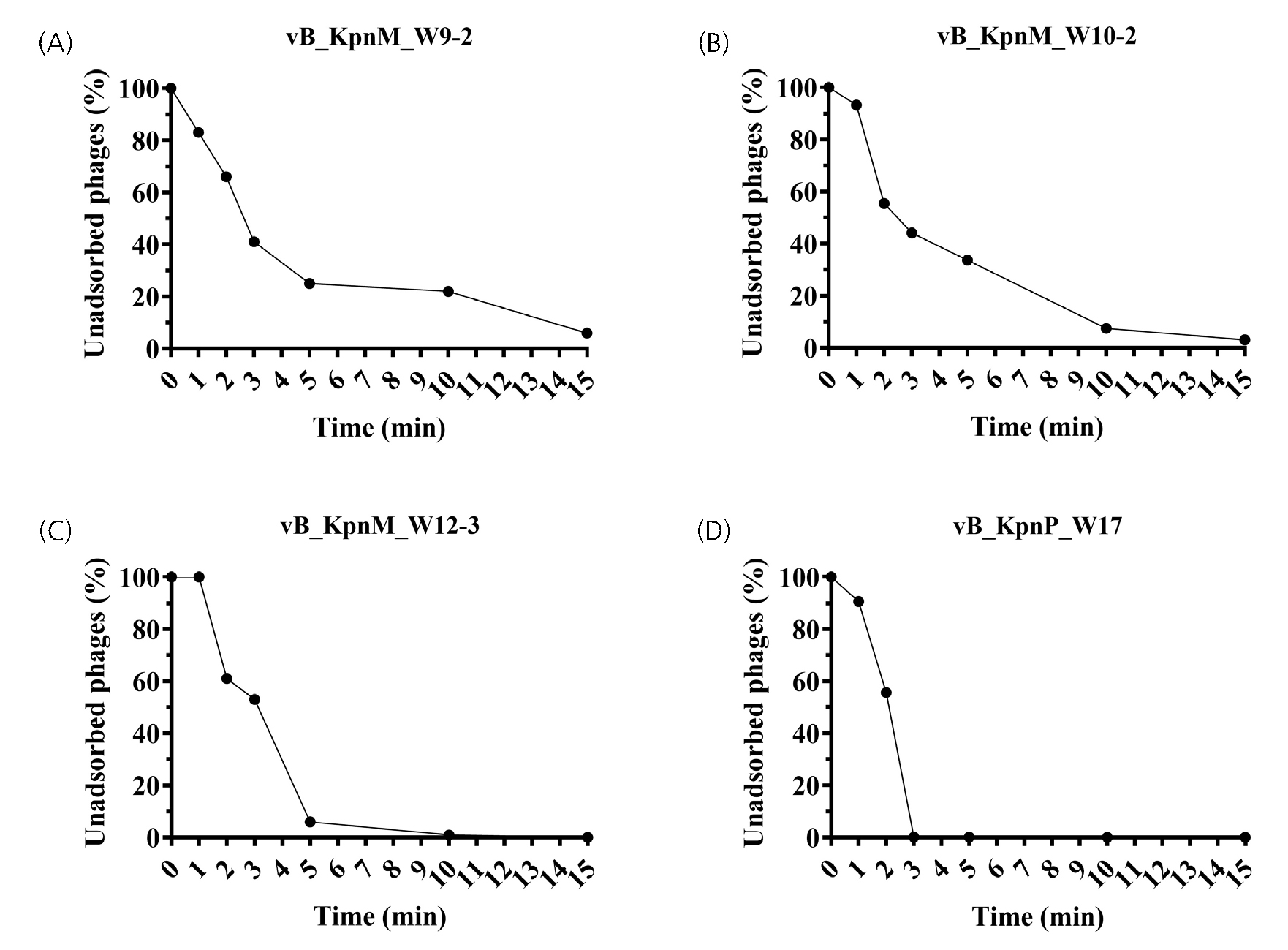
- Evaluation of Bacteriophage and Antibiotic Synergy Against Carbapenem-Resistant Klebsiella pneumoniae Clinical Isolates
- Bokyung Kim, Shukho Kim, Yoon-Jung Choi, Minsang Shin, Jungmin Kim
- The global rise of carbapenem-resistant Klebsiella pneumoniae (CRKP) poses a serious threat to public health due to limited therapeutic options and high …
- The global rise of carbapenem-resistant Klebsiella pneumoniae (CRKP) poses a serious threat to public health due to limited therapeutic options and high mortality rates. Bacteriophage (phage) therapy has emerged as a promising alternative; however, its effectiveness is often compromised by the rapid development of phage resistance. In this study, we investigated the synergistic potential of phage-antibiotic combination therapy against CRKP. Four phages―vB_KpnM_W9-2, vB_KpnM_W10-2, vB_KpnM_W12-3, and vB_KpnP_W17―were isolated and characterized for adsorption rate, replication dynamics, and environmental stability. Among them, vB_KpnP_W17 exhibited the most favorable adsorption kinetics and stability under various stress conditions. Synergistic interactions between phages and five antibiotics (colistin, meropenem, ciprofloxacin, amikacin, and tigecycline) were assessed in vitro using checkerboard assays against two CRKP clinical isolates. Phage-antibiotic combinations, particularly vB_KpnP_W17 with ciprofloxacin, significantly reduced the minimum inhibitory concentrations of the antibiotics and showed strong synergistic effects. In vivo mouse infection models further confirmed the therapeutic benefit, with repeated administration of the combination treatment resulting in a significant improvement in survival. Overall, these findings suggest that phage-antibiotic combinatorial therapy is a potent and viable strategy to combat CRKP infections and mitigate antibiotic resistance. - COLLAPSE
-
Original Article

- Development of a Multiplex One-step RT-qPCR Diagnostic Test for SARS-CoV-2 Using a Portable Biomeme Thermocycler
- Seonghyeon Lee, Shivani Rajoriya, Jieun Park, Bohyeon Kim, Augustine Natasha, Sara Puspareni Prayitno, Divya Misra, Kyungmin Park, Jin-Won Song, Taek-Kyun Lee, Kyu Sung Shin, Hyungdon Lee, Won-Keun Kim
- Coronavirus disease-19 (COVID-19), caused by Severe Acute Respiratory Syndrome Coronavirus-2 (SARS-CoV-2), poses a critical public health threat due to its high transmissibility, …
- Coronavirus disease-19 (COVID-19), caused by Severe Acute Respiratory Syndrome Coronavirus-2 (SARS-CoV-2), poses a critical public health threat due to its high transmissibility, infectivity, and prolonged incubation in humans. Timely identification of SARS-CoV-2 is crucial to control COVID-19 in the lack of effective antiviral medications in low resource regions. However, an accurate assay and portable diagnostic method for SARS-CoV-2 remains to be developed. To address this issue, we developed a multiplex one-step reverse transcription quantitative polymerase chain reaction (RT-qPCR) for diagnosis of SARS-CoV-2 using a portable Biomeme Franklin™ Real-Time PCR thermocycler. The performance of the Biomeme assay was evaluated and validated for the testing of SARS-CoV-2 based on multiplex detection of the nucleocapsid, envelope, and spike genes. The Biomeme assay demonstrated high sensitivity by detecting the RNA of wild type 19 A and multiple SARS-CoV-2 variants, including B.1.617.2, BA.1, BA.2, BA.2.75, BA.5, and BN.1 from 0.01 ng/µl of total RNA and showed no cross-reactivity with other human coronaviruses, such as HCoV-OC43, HCoV-NL63, and HCoV-229E. The diagnostic method exhibited an analytical sensitivity of 95% and a specificity of 100%. The Biomeme Franklin platform generates rapid results within 3-4 h and allows smartphone-based output quantification, making it highly suitable as a Point of Care (POC) diagnostic tool. Therefore, this study reports on a diagnostic testing method for the prompt and reliable molecular diagnosis of SARS-CoV-2. - COLLAPSE
-
Original Article
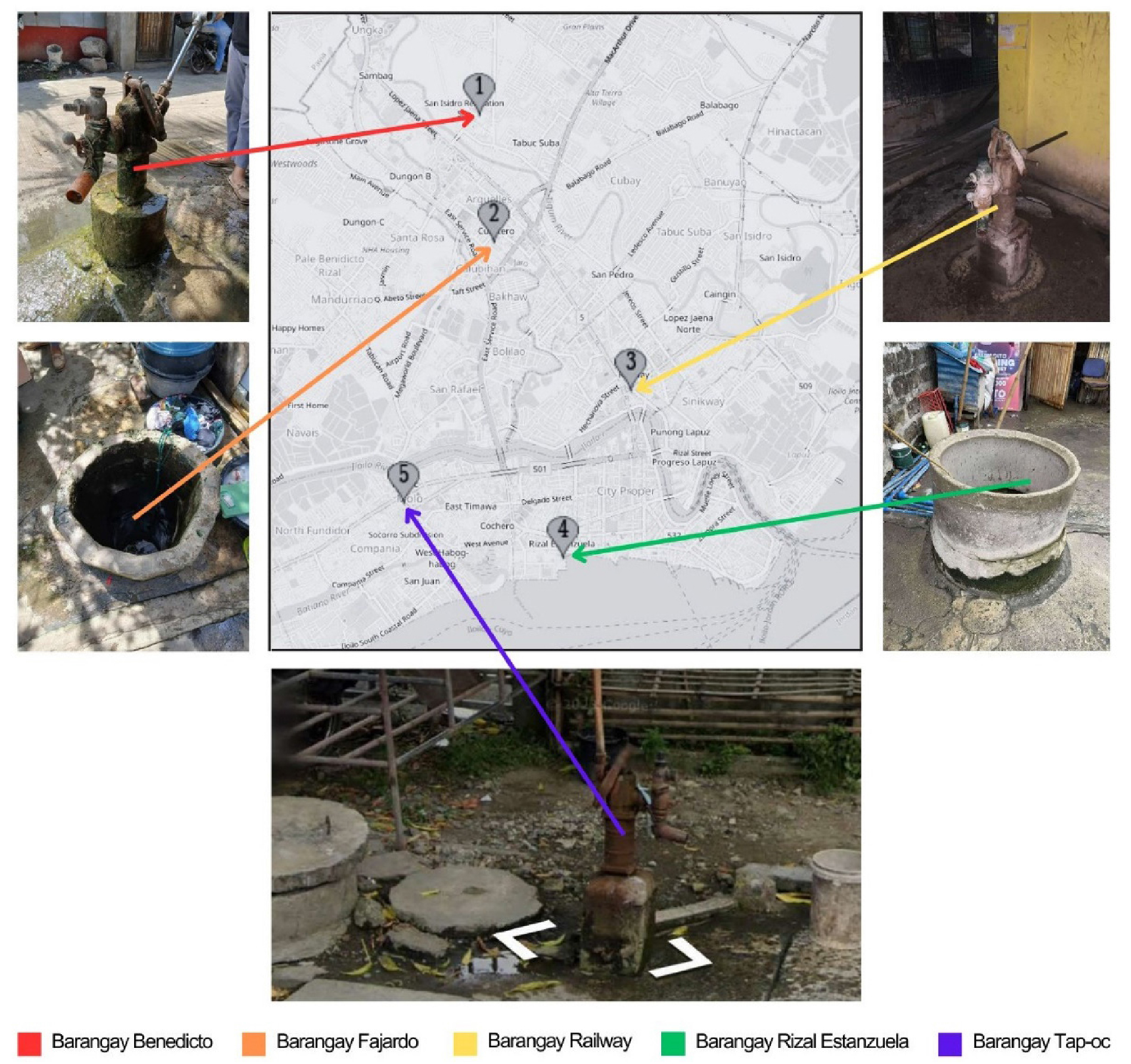
- Abundance, Diversity, and Antibiotic Resistance of Aeromonas spp. in Well Water from Selected Barangays in Iloilo City, Philippines
- Lois Recalcar, Therese Angela Leñar, Kylene Marie Luzano, William Matandac Jr., Miles Roland Pentojo, Simon John Robles, Stephen Sabinay, Peter Palma, Rolando Pakingking Jr.
- This study investigated the abundance, diversity, and antibiotic resistance patterns of Aeromonas spp. in well water from five selected barangays (villages) in …
- This study investigated the abundance, diversity, and antibiotic resistance patterns of Aeromonas spp. in well water from five selected barangays (villages) in Iloilo City, alongside heterotrophic bacterial counts and physicochemical parameters during the dry (March to May) and wet (June to August) seasons. Presumptive Aeromonas counts reached 10³ CFU/mL during the dry season and 10² CFU/mL during the wet season, while heterotrophic plate counts peaked at 10⁴ CFU/mL and 10³ CFU/mL, respectively. Seasonal variations significantly influenced water quality, with higher temperatures, biochemical oxygen demand, and total dissolved solids recorded during the dry season, while dissolved oxygen levels were elevated during the wet season (p < 0.05). Aeromonas hydrophila was the most prevalent (59%), followed by A. veronii (21%). Other predominant bacterial species included Escherichia coli (12%), Enterococcus faecium (5%), and Staphylococcus aureus (7%), the latter found only in the wet season. Antimicrobial susceptibility testing of 10 antibiotics commonly used in human-veterinary medicine, and aquaculture, revealed high resistance to amoxicillin (A. hydrophila: 98.6%; A. veronii: 96%; E. faecium: 100%; E. coli: 100%; S. aureus: 100%), erythromycin (100%; 60%; 100%; 100%; 100%), and neomycin (97.1%; 92%; 50%; 57.1%; 100%). Multidrug resistance was widespread, with MAR indices exceeding 0.2, indicating substantial antibiotic exposure and contamination from high-risk sources. This is the first report on the load, composition, and antibiotic resistance of Aeromonas spp. in well water in the Philippines, underscoring the need for continuous microbial monitoring, improved well-water disinfection, and strengthened antibiotic stewardship to mitigate public health risks associated with contaminated groundwater sources. - COLLAPSE
-
Original Article
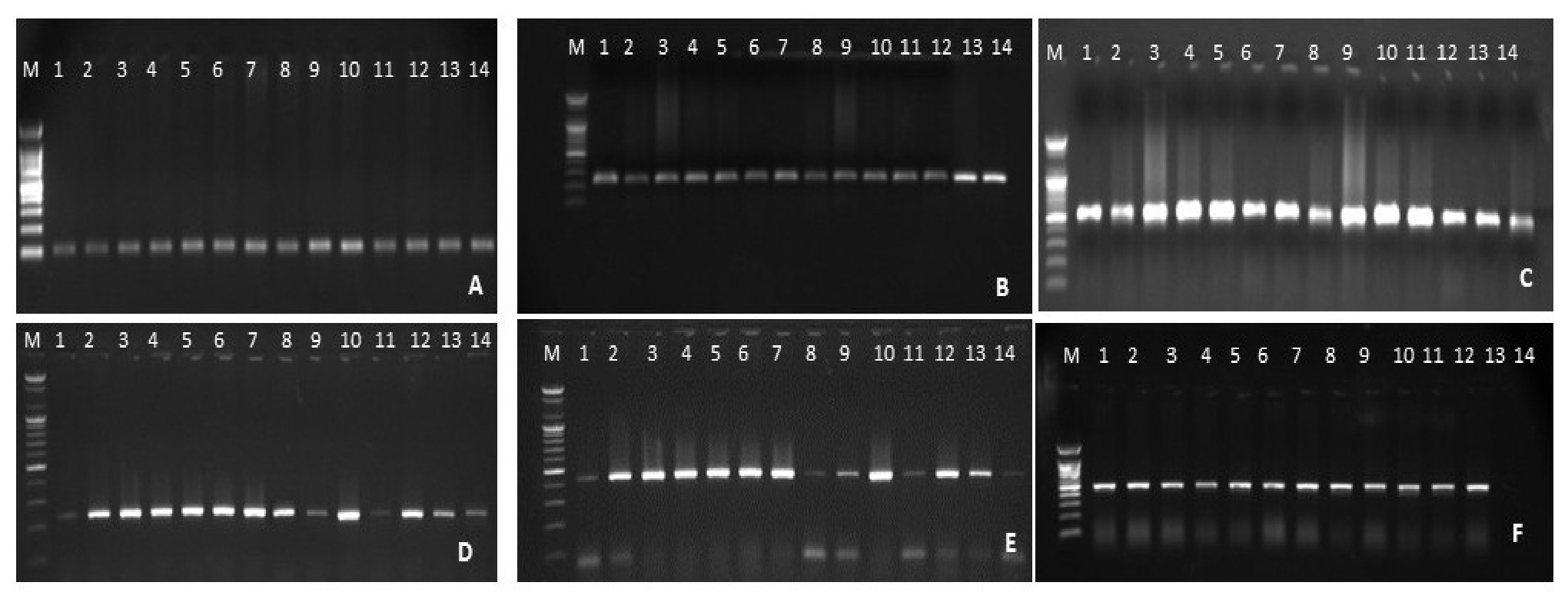
- Occurrence, Antibiogram and Virulence Profiling of Hypervirulent Klebsiella Pneumonia in Broiler Chickens at Slaughter Shops in Thi-Qar Province, Iraq
- Muslim Dhahr Musa
- This study investigated the prevalence, antibiogram, and virulence gene profiling of hypervirulent Klebsiella pneumoniae (hv-K.p) isolated from the broiler chicken intestines in …
- This study investigated the prevalence, antibiogram, and virulence gene profiling of hypervirulent Klebsiella pneumoniae (hv-K.p) isolated from the broiler chicken intestines in slaughter shops located in Thi-Qar province, Iraq. A total of 440 cloacal swabs were collected from 60 chicken slaughter shops. Isolation and identification of K. pneumoniae were performed using conventional bacteriological methods, followed by species confirmation via VITEK II and PCR targeting the 16-23S rDNA ITS internal translation spacer region. hv-K.p strains were identified based on the PCR detection of five genes (iucA, crmpA, rmpA2, iroB, and peg-344). Antimicrobial susceptibility testing was conducted using VITEK II system. The overall prevalence of K. pneumoniae was 29.5%,of which, 35 isolates (26.9%) were identified as hv-K.p. Among the virulence genes, icuA was the most frequently detected (88.6%), followed by crmpA (74.3%), iroB, (62.6%), rmpA2 (45.7%), and peg-344 (34.3%) isolates. A significant difference (P=0.00) was observed between the results of the string test and molecular assay in hv-K.p detection. Genotype III was the most prevalent hypervirulent genotype at 37.1%, followed by genotypes I and II (each 17.1%), genotype V (14.3%) isolates, and genotype IV 11.4%. Antibiogram profiling indicated high resistance to gentamicin 23 (65.7%), and azithromycin (51.4%), while the lowest resistance was observed for cefepime 4(11.4%). Of the 35 hv-K.p isolates, 21(60%) were classified as multi-drug resistance. Carbapenem-resistant hv- K.p was detected in 45.7% of hv-k.p isolates. In conclusion, broiler chickens represent an important reservoir of hv-K.p in retail slaughter settings. It is essential for stringent hygiene and control measures to mitigate the dissemination of this pathotype. - COLLAPSE
-
Original Article
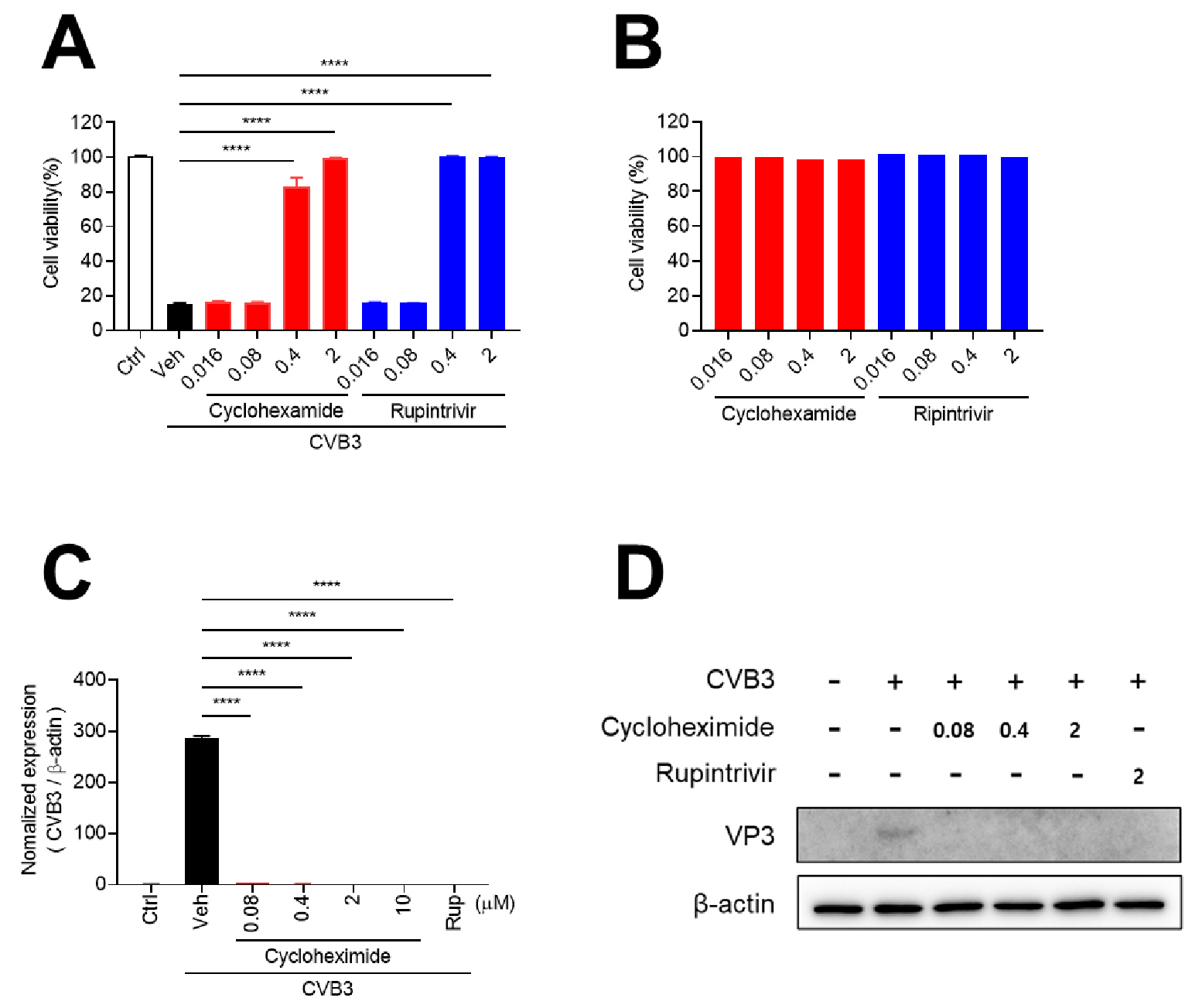
- Antiviral Activity of Cycloheximide Against Coxsackievirus B3 Through Autophagy Inhibition
- Hwa-Jung Choi
- Coxsackievirus group B (CVBs) are a subset of enteroviruses that initially replicate in the gastrointestinal tract and can subsequently cause systemic infections, …
- Coxsackievirus group B (CVBs) are a subset of enteroviruses that initially replicate in the gastrointestinal tract and can subsequently cause systemic infections, often leading to severe complications such as pancreatitis. In this study, we investigated the antiviral effects and autophagy-regulating function of cycloheximide, a known protein synthesis inhibitor. Experiments conducted in Vero cells demonstrated that cycloheximide significantly suppressed CVB3-induced cytopathic effects and effectively blocked viral RNA replication and VP3 protein expression. Furthermore, cycloheximide activated the mTORC1 signaling pathway, resulting in reduced LC3 expression and inhibition of autophagy, thereby contributing to its antiviral activity. This mechanism was similarly observed across other CVB serotypes, including CVB1, CVB2, CVB4, CVB5, and CVB6, indicating broad-spectrum antiviral efficacy. In conclusion, cycloheximide effectively inhibits CVB replication by suppressing autophagy through mTORC1 activation, suggesting its potential as a therapeutic agent for CVB infections. - COLLAPSE
Journal Informaiton
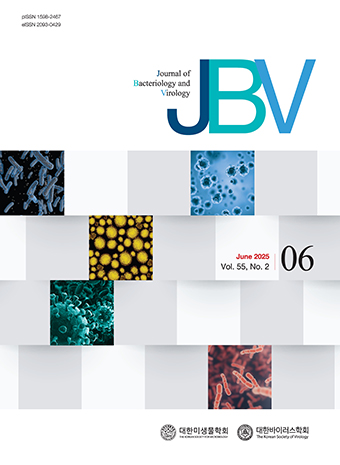 JOURNAL OF BACTERIOLOGY AND VIROLOGY
JOURNAL OF BACTERIOLOGY AND VIROLOGY
Journal Informaiton
Journal Informaiton - close
 JOURNAL OF BACTERIOLOGY AND VIROLOGY
JOURNAL OF BACTERIOLOGY AND VIROLOGY
